Houses of mourning
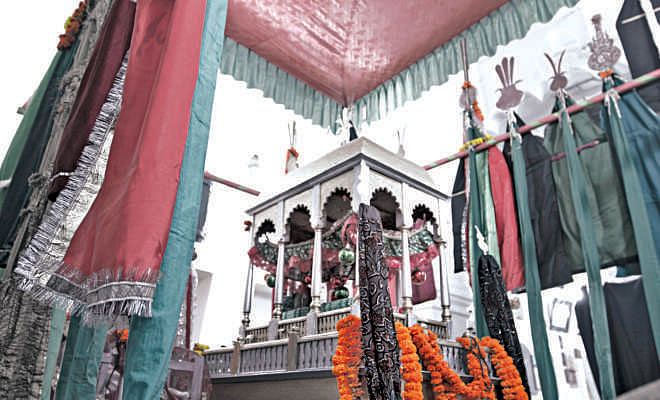
Much has been penned down about 'the narrow, winding alleys' of Old Dhaka, so much so that the phrase has somewhat become a cliché. Nevertheless, we go back, again and again to those very alleys, because there we find pieces of our history scattered all around.
Abul Hasnat Road is a glorious example. As you enter the premises of house number 48, the sight of a magnificent, one-storied building with beautiful archways will bedazzle you. Sometimes, you may see an authoritative, white-bearded man standing in front of this splendid building.
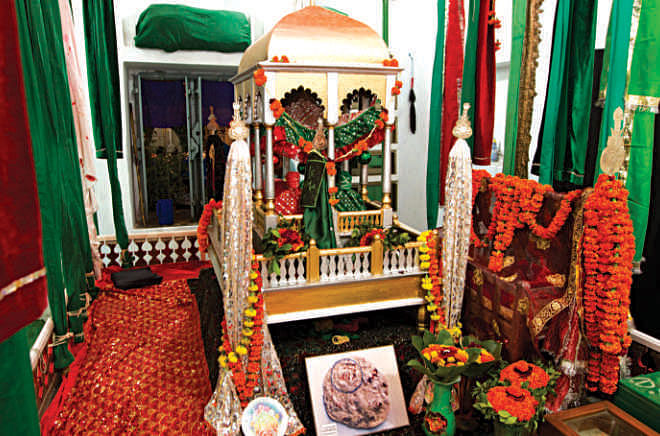
As you approach him, he will greet you with an amiable smile and a warm handshake with all the humility in the world. Syed Taqui Mohammed alias Buddhan Saheb, son of Nawab Syed Chottan Saheb, is the current head of the family which resides here.
He is the 'Muttawalli' of Mohammadi Begum Imambara -- the more than 300-year old picturesque building which is a part of his home.
Imambara (a.k.a. imambargah, hussainia or ashurkhana) basically means 'house of imam', referring to the imams of Islam who have sacrificed their lives for the cause of our religion. Essentially, an imambara is a house of mourning for those imams.
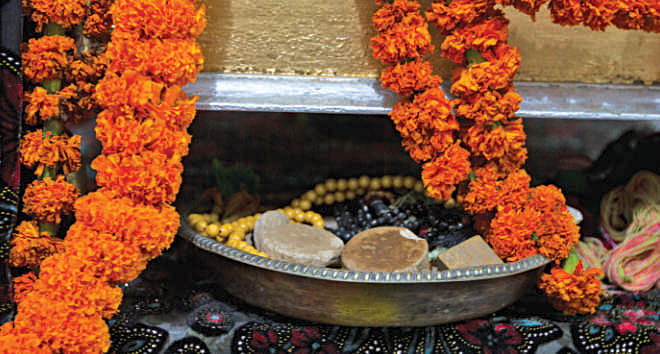
An imambara holds many religious programmes, particularly in the commemorative dates of Prophet Muhammad (PBUH), his companions and his family members. The houses of mourning also act as memorials to the tragedy of the battle of Karbala which took place on the tenth of Muharram in 61AH (in the Islamic calendar).
On that fatal day, Hussain ibn Ali (RA), one of the dear grandsons of our beloved Prophet, was brutally murdered along with his small troop, which included many of his family members, such as Ali al-Asghar, his son, who was of a very young age. Ashura (the tenth of Muharram) is observed by Muslims all across the world, with the imambaras holding ritualistic ceremonies in memory of the tragedy.
There are some elements that are common to all imambaras. One of them is 'Tazia Mubarak'. In memory of Imam Hasan (RA) and Imam Hussain (RA), two miniature grave-like structures are kept side by side, often on an exquisite, decorated platform.
Tazia Mubarak in the imambara of Mohammadi Begum - like that of any other - has one structure wrapped in a red cloth and another in green. The one in red is dedicated to the memory of Hussain (RA) and the one in green is in the remembrance of Hasan (RA).
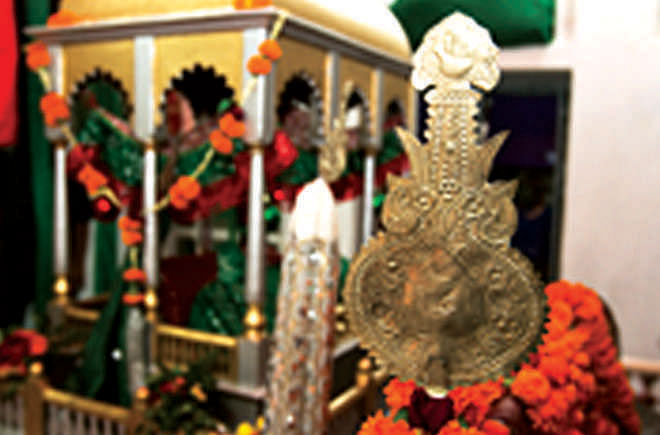
Often, the Tazia Mubarak is covered in a black cloth, the colour most associated with mourning.
The imambara at 48 Abul Hasnat Road is one of the oldest. Syed Taqui Mohammed, along with his son Syed Ahmed Ali, explained their genealogy. "This imambara was constructed in 1707. It is a part of a larger palace," Ali informed. "When Shah Shuja, son of Mughal Emperor Shah Jahan, came to Dhaka as the Viceroy of Bengal, he brought along with him hundreds of people. Mir Syed Shakrullah al-Hussaini was one of them. He built this residence. He was our grandfather Nawab Chottan Saheb's maternal forefather."
The family can trace back their origins to Najaf, Iraq.
Syed Taqui, who is also a member of the National Waqf Committee, under the Ministry of Religious Affairs and an eminent Shiite scholar, said that the oldest imambara is Bibi Ka Rowza in Farashganj, established in 1608.
S. M .Taifoor, in his book, Glimpses of Old Dhaka, agreed. "The earliest Shia house of mourning could be traced to a place called 'Farashgunj' in Dhaka on the river bank where the site is called Bibi-ka-Rawzah."
But even Taifoor in around the mid-1900s (when he wrote the book) did not see the original building. "… no vestige of any building except a half-built gateway and an unpretentious mosque," he wrote.
The second oldest imambara is Hussaini Dalan, originally built in 1642 (during Shah Shuja's reign) by Mir Murad, who was the chief of the royal 'nawara' (fleet of boats).
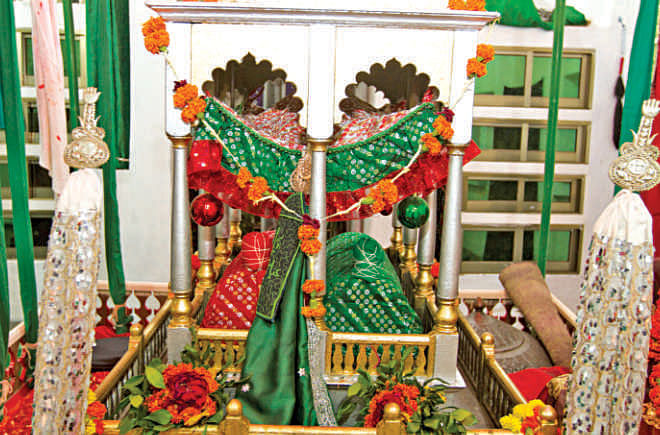
The complex is massive -- complete with a pond, graveyards, courtyards and some institutions.
The complex has seen many renovations and additions. The first sight of the main building -- with its pillars and calligraphy works -- strikes a spiritual cord. When you are in the front terrace, the grandiosity becomes more apparent with the large gateways and beautiful arches.
Inside, luxurious chandeliers hang down from the high ceiling. Calligraphy art in mediums such as tiles is plentiful.
Overlooking a well-maintained pond, the veranda on the back is supported by imposing pillars.
Perhaps the most magnificent view is from the back. Decorative merlons enclose the pond from three sides, with an opening for 'ghat' on each. Water touches the wall of the Dalan from one end. Pavilions on either sides of the building feature arched windows and perforated screens. The same type of merlons also borders the rooftop.
The complex features a very important part of our history. 'Muqbara-e-Naiyeb Nazim' is a section where there are eight modest-looking tombstones. Four of them are the final resting places of four Naiyeb Nazims, including Nawab Gaziuddin Haider -- the last of the Naiyeb Nazims -- who died in the 1840s.
In an imambara, including Hussaini Dalan, you might see swords and shields. These work as a reminder of the battle of Karbala and the ultimate sacrifice many closed ones of the Prophet had paid.
'Alam' (flag or sign) is another symbolic artefact common to imambaras. There are different kinds of 'alam'. One 'alam', for example, is in the shape of a 'panja' (hand). Just like the fact that in an army there are different flags distinguishing between different battalions, in Islam too, different people or different battalions carried different flags.
Pictures of shrines of Ali (RA), Hussain (RA) and many such important figures hang on the walls. They too, contribute in creating the atmosphere for remembrance and respect.

Sometimes, in many imambaras, you may see a painting of a horse. This is a depiction of Zuljanah -- the illustrious horse on which Imam Hussain (RA) went to the battle of Karbala. Again, the goal is simple: to make the imambara a memorial of Hasan (RA) and Hussain (RA) and to create the right environment for mourning for martyrs.
Sights of people reciting or praying -- or even crying -- is not uncommon. An imambara is after all, a place where you grieve for the tragedy of Karbala.
There are many other imambaras. Another prominent one (which is a newly built building in place of an older one) stands under the shadows of the vestiges of Bara Katra. According to Taifoor, the palace of Bara Katra was constructed, under Shah Shuja's order, by his chief architect, in 1644.
Just one week later, on 4 November of this year, Ashura will be held. For the imambaras, this is a huge event, with activities ranging from 'marsiya' (elegiac poems commemorating Ashura) to 'matm' (requiem).
By M H Haider
We express our gratitude to Syed Ahmed Ali and his family for sharing valuable information for the write-up. Other sources of information include Glimpses of Old Dhaka by S M Taifoor and www.hussainidalan.com.
Photo: LS Archive/ Sazzad Ibne Sayed


 For all latest news, follow The Daily Star's Google News channel.
For all latest news, follow The Daily Star's Google News channel. 

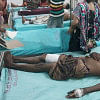





Comments